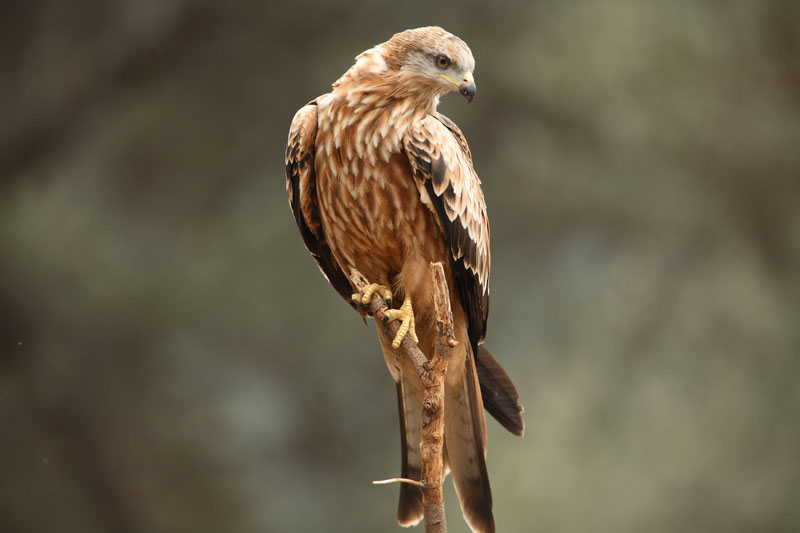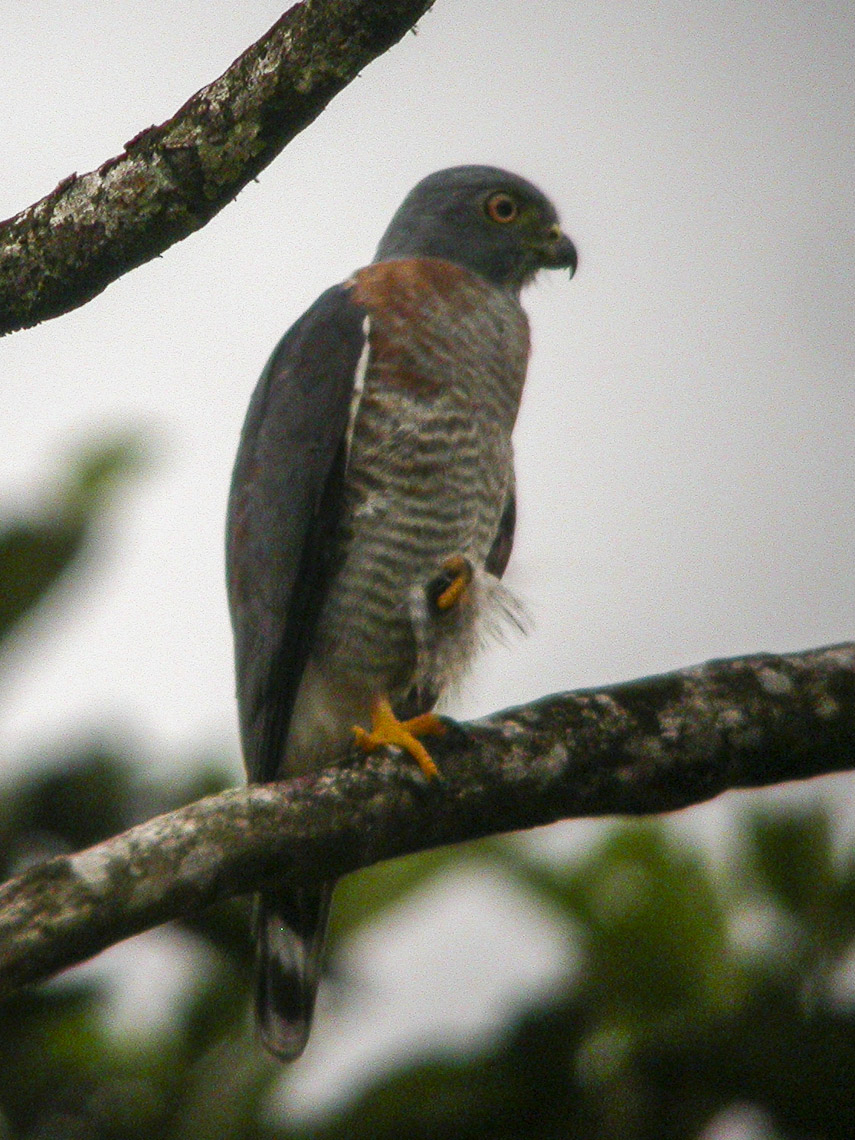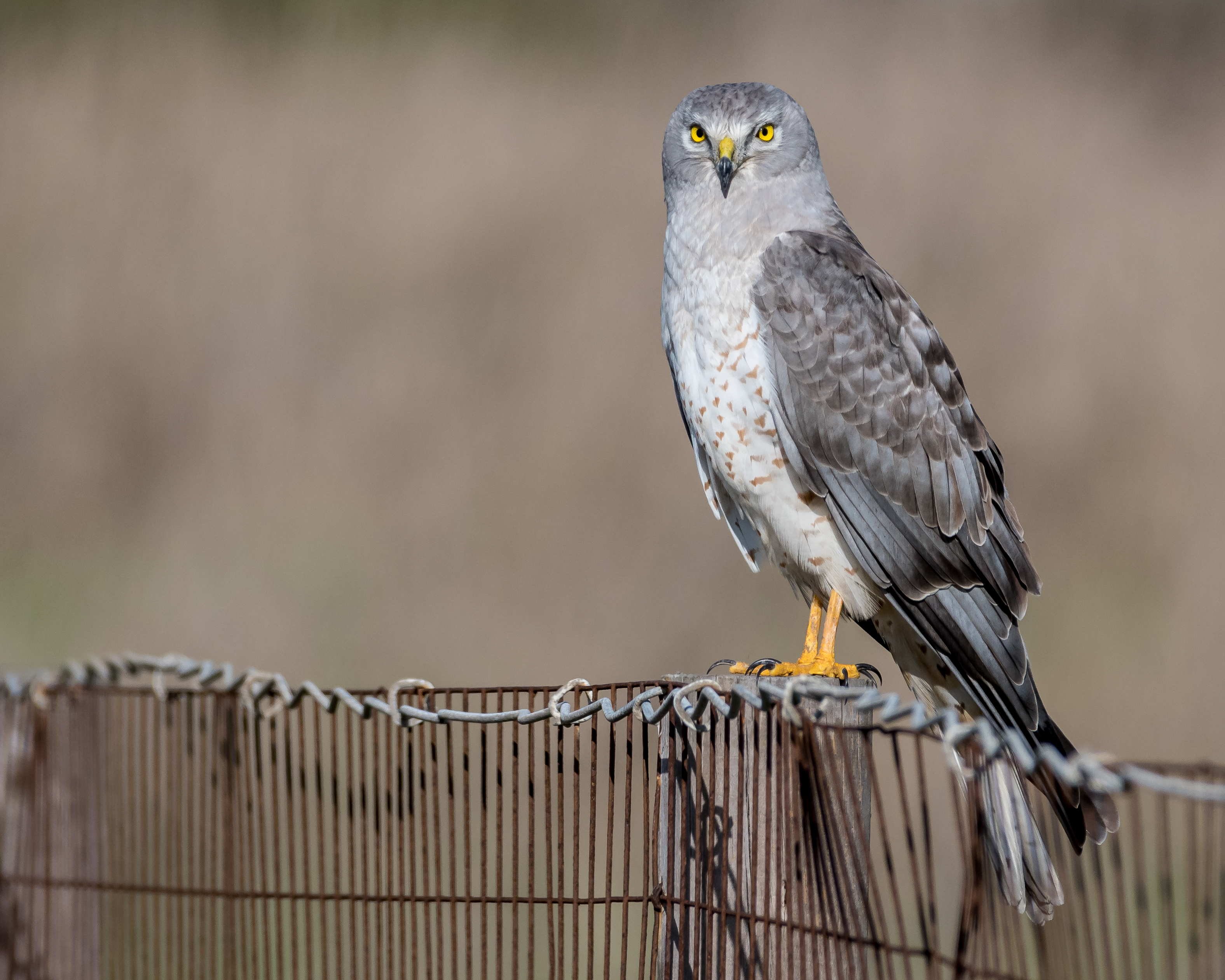|
Cooper's Hawk
Cooper's hawk (''Accipiter cooperii'') is a medium-sized hawk native to the North American continent and found from southern Canada to Mexico. This species is a member of the genus ''Accipiter'', sometimes referred to as true hawks, which are famously agile, relatively small hawks common to wooded habitats around the world and also the most diverse of all diurnal raptor genera. As in many birds of prey, the male is smaller than the female.Snyder, N. F., & Wiley, J. W. (1976). ''Sexual size dimorphism in hawks and owls of North America (No. 20)''. American Ornithologists' Union. The birds found east of the Mississippi River tend to be larger on average than the birds found to the west.Pearlstine, E. V., & Thompson, D. B. (2004). ''Geographic variation in morphology of four species of migratory raptors''. Journal of Raptor Research, 38(4), 334–342. It is easily confused with the smaller but similar sharp-shinned hawk. (''A. striatus'') The species was named in 1828 by Charles Lu ... [...More Info...] [...Related Items...] OR: [Wikipedia] [Google] [Baidu] |
Charles Lucien Bonaparte
Charles Lucien Jules Laurent Bonaparte, 2nd Prince of Canino and Musignano (24 May 1803 – 29 July 1857), was a French naturalist and ornithologist. Lucien and his wife had twelve children, including Cardinal Lucien Bonaparte. Life and career Bonaparte was the son of Lucien Bonaparte and Alexandrine de Bleschamp. Lucien was a younger brother of Napoleon I, making Charles the emperor’s nephew. Born in Paris, he was raised in Italy. On 29 June 1822, he married his cousin, Zénaïde, in Brussels. Soon after the marriage, the couple left for Philadelphia in the United States to live with Zénaïde's father, Joseph Bonaparte (who was also the paternal uncle of Charles). Before leaving Italy, Charles had already discovered a warbler new to science, the moustached warbler, and on the voyage he collected specimens of a new storm-petrel. On arrival in the United States, he presented a paper on this new bird, which was later named after Alexander Wilson. Bonaparte then set ab ... [...More Info...] [...Related Items...] OR: [Wikipedia] [Google] [Baidu] |
Binomial Name
In taxonomy, binomial nomenclature ("two-term naming system"), also called nomenclature ("two-name naming system") or binary nomenclature, is a formal system of naming species of living things by giving each a name composed of two parts, both of which use Latin grammatical forms, although they can be based on words from other languages. Such a name is called a binomial name (which may be shortened to just "binomial"), a binomen, name or a scientific name; more informally it is also historically called a Latin name. The first part of the name – the '' generic name'' – identifies the genus to which the species belongs, whereas the second part – the specific name or specific epithet – distinguishes the species within the genus. For example, modern humans belong to the genus ''Homo'' and within this genus to the species ''Homo sapiens''. '' Tyrannosaurus rex'' is likely the most widely known binomial. The ''formal'' introduction of this system of naming species is cred ... [...More Info...] [...Related Items...] OR: [Wikipedia] [Google] [Baidu] |
Old World
The "Old World" is a term for Afro-Eurasia that originated in Europe , after Europeans became aware of the existence of the Americas. It is used to contrast the continents of Africa, Europe, and Asia, which were previously thought of by their inhabitants as comprising the entire world, with the "New World", a term for the newly encountered lands of the Western Hemisphere, particularly the Americas. Etymology In the context of archaeology and world history, the term "Old World" includes those parts of the world which were in (indirect) cultural contact from the Bronze Age onwards, resulting in the parallel development of the early civilizations, mostly in the temperate zone between roughly the 45th and 25th parallels north, in the area of the Mediterranean, including North Africa. It also included Mesopotamia, the Persian plateau, the Indian subcontinent, China, and parts of Sub-Saharan Africa. These regions were connected via the Silk Road trade route, and they have a pr ... [...More Info...] [...Related Items...] OR: [Wikipedia] [Google] [Baidu] |
Bering Land Bridge
Beringia is defined today as the land and maritime area bounded on the west by the Lena River in Russia; on the east by the Mackenzie River in Canada; on the north by 72 degrees north latitude in the Chukchi Sea; and on the south by the tip of the Kamchatka Peninsula. It includes the Chukchi Sea, the Bering Sea, the Bering Strait, the Chukchi and Kamchatka Peninsulas in Russia as well as Alaska in the United States and the Yukon in Canada. The area includes land lying on the North American Plate and Siberian land east of the Chersky Range. At certain times in prehistory, it formed a land bridge that was up to wide at its greatest extent and which covered an area as large as British Columbia and Alberta together, totaling approximately . Today, the only land that is visible from the central part of the Bering land bridge are the Diomede Islands, the Pribilof Islands of St. Paul and St. George, St. Lawrence Island, St. Matthew Island, and King Island. The term ''Beringia'' ... [...More Info...] [...Related Items...] OR: [Wikipedia] [Google] [Baidu] |
Eurasian Sparrowhawk
The Eurasian sparrowhawk (''Accipiter nisus''), also known as the northern sparrowhawk or simply the sparrowhawk, is a small bird of prey in the family Accipitridae. Adult male Eurasian sparrowhawks have bluish grey upperparts and orange-barred underparts; females and juveniles are brown above with brown barring below. The female is up to 25% larger than the male – one of the greatest size differences between the sexes in any bird species. Though it is a predator which specialises in catching woodland birds, the Eurasian sparrowhawk can be found in any habitat and often hunts garden birds in towns and cities. Males tend to take smaller birds, including tits, finches, and sparrows; females catch primarily thrushes and starlings, but are capable of killing birds weighing or more. The Eurasian sparrowhawk is found throughout the temperate and subtropical parts of the Old World; while birds from the northern parts of the range migrate south for winter, their southern count ... [...More Info...] [...Related Items...] OR: [Wikipedia] [Google] [Baidu] |
Milvus
''Milvus'' is a genus of medium-sized birds of prey. The genus was erected by the French naturalist Bernard Germain de Lacépède in 1799 with the red kite as the type species. The name is the Latin word for the red kite. Species This is an Old World group that forms part of the subfamily Milvinae. The genus contains three species. Allozyme data indicates that the genetic diversity in both black and red kites is rather low.Schreiber, Arnd; Stubbe, Michael & Stubbe, Annegret (2000): Red kite (''Milvus milvus'') and black kite (''M. migrans''): minute genetic interspecies distance of two raptors breeding in a mixed community (Falconiformes: Accipitridae). '' Biol. J. Linn. Soc.'' 69'(3): 351–365. (HTML abstract) Successful hybridization between ''Milvus'' kites is fairly commonplace, making mtDNA analyses unreliable to resolve the genus' phylogeny. Furthermore, there is no good correlation between molecular characters and biogeography and morphology in the red kite due to ... [...More Info...] [...Related Items...] OR: [Wikipedia] [Google] [Baidu] |
Buteo
''Buteo'' is a genus of medium to fairly large, wide-ranging raptors with a robust body and broad wings. In the Old World, members of this genus are called "buzzards", but " hawk" is used in the New World (Etymology: ''Buteo'' is the Latin name of the common buzzard). As both terms are ambiguous, buteo is sometimes used instead, for example, by the Peregrine Fund. Characteristics Buteos are fairly large birds. Total length can vary from and wingspan can range from . The lightest known species is the roadside hawk, at an average of although the lesser known white-rumped and Ridgway's hawks are similarly small in average wingspan around , and average length around in standard measurements. The largest species in length and wingspan is the upland buzzard, which averages around in length and in wingspan. The upland is rivaled in weight and outsized in foot measurements and bill size by the ferruginous hawk. In both of these largest buteos, adults typically weigh over , an ... [...More Info...] [...Related Items...] OR: [Wikipedia] [Google] [Baidu] |
Tiny Hawk
The tiny hawk (''Microspizias superciliosus'') is a small diurnal bird of prey found in or near forests, primarily humid, throughout much of the Neotropics. It is primarily a bird-eater, and is known to prey on hummingbirds. Taxonomy The tiny hawk was formally described by the Swedish naturalist Carl Linnaeus in 1766 in the twelfth edition of his '' Systema Naturae'' under the binomial name ''Falco superciliosus''. Linnaeus specified the locality as Suriname. The specific epithet ''superciliosus'' is Latin meaning "eye-browed". There are two subspecies separated by the northern Andes. The two differ most significantly in relative tail length; differences in size and color are small, and can be hard to distinguish. *''A. s. superciliosus'' is found east of the Andes in South America. Slightly the larger of the two subspecies, it is paler and has diffuse, grayish barring on the underparts. *''A. s. fontanieri'' is found from Nicaragua down to western Ecuador. It is somewhat ... [...More Info...] [...Related Items...] OR: [Wikipedia] [Google] [Baidu] |
Monophyly
In cladistics for a group of organisms, monophyly is the condition of being a clade—that is, a group of taxa composed only of a common ancestor (or more precisely an ancestral population) and all of its lineal descendants. Monophyletic groups are typically characterised by shared derived characteristics ( synapomorphies), which distinguish organisms in the clade from other organisms. An equivalent term is holophyly. The word "mono-phyly" means "one-tribe" in Greek. Monophyly is contrasted with paraphyly and polyphyly as shown in the second diagram. A ''paraphyletic group'' consists of all of the descendants of a common ancestor minus one or more monophyletic groups. A '' polyphyletic group'' is characterized by convergent features or habits of scientific interest (for example, night-active primates, fruit trees, aquatic insects). The features by which a polyphyletic group is differentiated from others are not inherited from a common ancestor. These definitions have tak ... [...More Info...] [...Related Items...] OR: [Wikipedia] [Google] [Baidu] |
Erythrotriorchis
''Erythrotriorchis'' is a genus of bird of prey in the family Accipitridae. It contains the following species: * Chestnut-shouldered goshawk (''Erythrotriorchis buergersi'') * Red goshawk (''Erythrotriorchis radiatus'') Etymology "Erythro-" is from a Greek word for "red", and "triorchis" meant a kind of hawk thought to have three testicles. For further details see '' Eutriorchis''. Taxonomy Latham described the red goshawk as ''Falco radiatus'' in 1801. Sharpe definedAs cited by Peters: ''Erythrotriorchis'' in 1875 as a new monotypic genus for ''Falco radiatus''. Peters also included ''E. doriae'' in the genus, p225/ref> though Doria's goshawk Doria's goshawk or Doria's hawk, (''Megatriorchis doriae'') is a raptor, the only member of the genus ''Megatriorchis''. Description At up to 69 cm long, it is among the biggest hawks in the broad sense. It is greyish-brown with a black-ba ... is now classified separately as ''Megatriorchis doriae''. References Bi ... [...More Info...] [...Related Items...] OR: [Wikipedia] [Google] [Baidu] |
Harpagus (bird)
''Harpagus'' is a genus of birds of prey in the family Accipitridae. It comprises: Both live in tropical American forest. They are small, rather accipiter-like kites, 30 to 35 cm long and compact, with long tails and oval wings ("pinched in" near the base of the trailing edge) which they characteristically curve downward when soaring or gliding. Both have dark tails with pale bars, as well as a white throat with a dark stripe down the middle. Another shared feature is a blunt bill with two notches on each side of the upper mandible. This "double tooth" gave rise not only to the common name of one species but to the specific epithets ''bidentatus'' and ''diodon''. Both like rather high perches in trees and sometimes soar above the forest. Harpagus Harpagus, also known as Harpagos or Hypargus (Ancient Greek Ἅρπαγος; Akkadian: ''Arbaku''), was a Median general from the 6th century BC, credited by Herodotus as having put Cyrus the Great on the throne through hi ... [...More Info...] [...Related Items...] OR: [Wikipedia] [Google] [Baidu] |
Harrier (bird)
A harrier is any of the several species of diurnal hawks sometimes placed in the subfamily Circinae of the bird of prey family Accipitridae. Harriers characteristically hunt by flying low over open ground, feeding on small mammals, reptiles, or birds. The young of the species are sometimes referred to as ring-tail harriers. They are distinctive with long wings, a long narrow tail, the slow and low flight over grasslands and skull peculiarities. The harriers are thought to have diversified with the expansion of grasslands and the emergence of grasses about 6 to 8 million years ago during the Late Miocene and Pliocene. Taxonomy The genus ''Circus'' was introduced by the French naturalist Bernard Germain de Lacépède in 1799. The type species was subsequently designated as the western marsh harrier. Most harriers are placed in this genus. The word ''Circus'' is derived from the Ancient Greek ''kirkos'', referring to a bird of prey named for its circling flight (''kirkos' ... [...More Info...] [...Related Items...] OR: [Wikipedia] [Google] [Baidu] |








